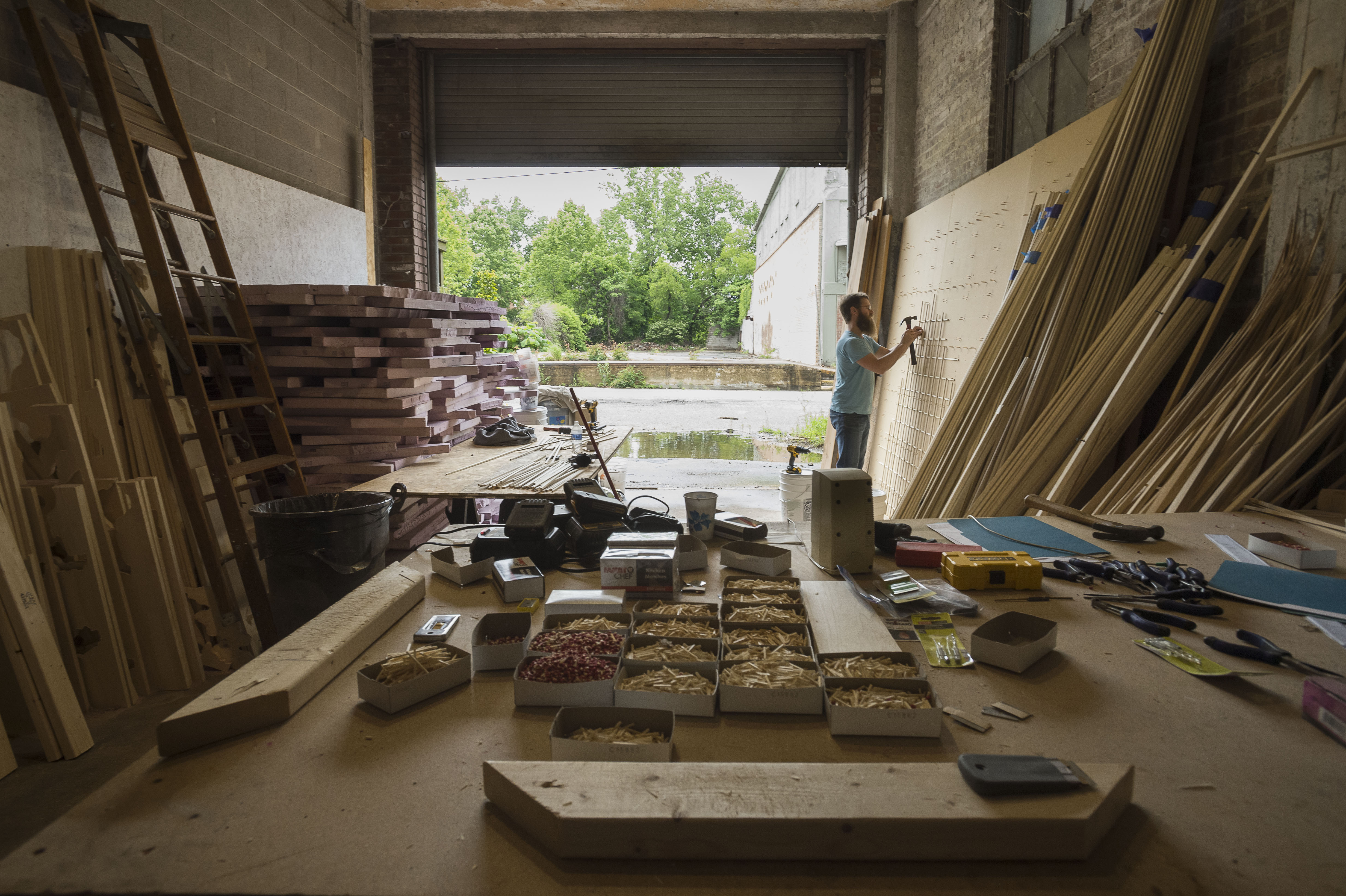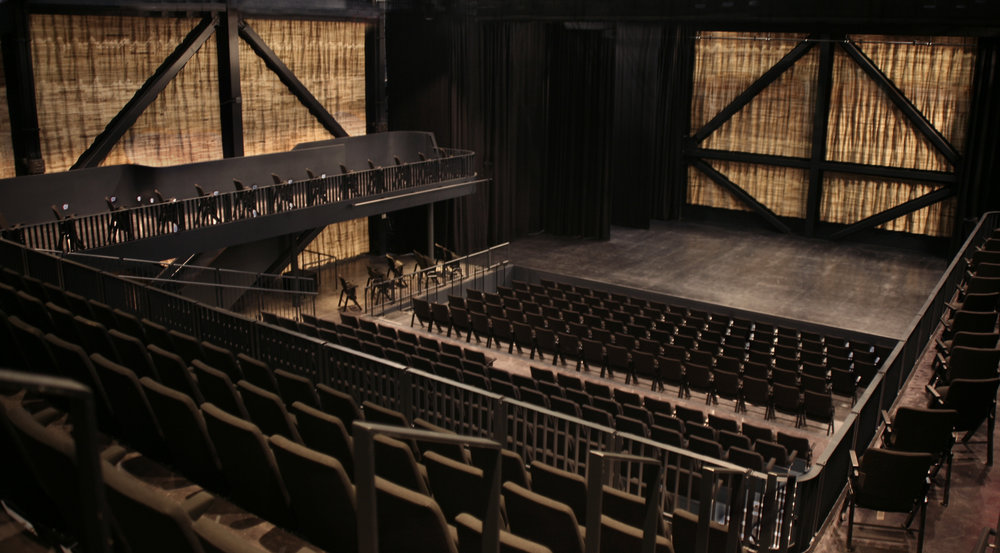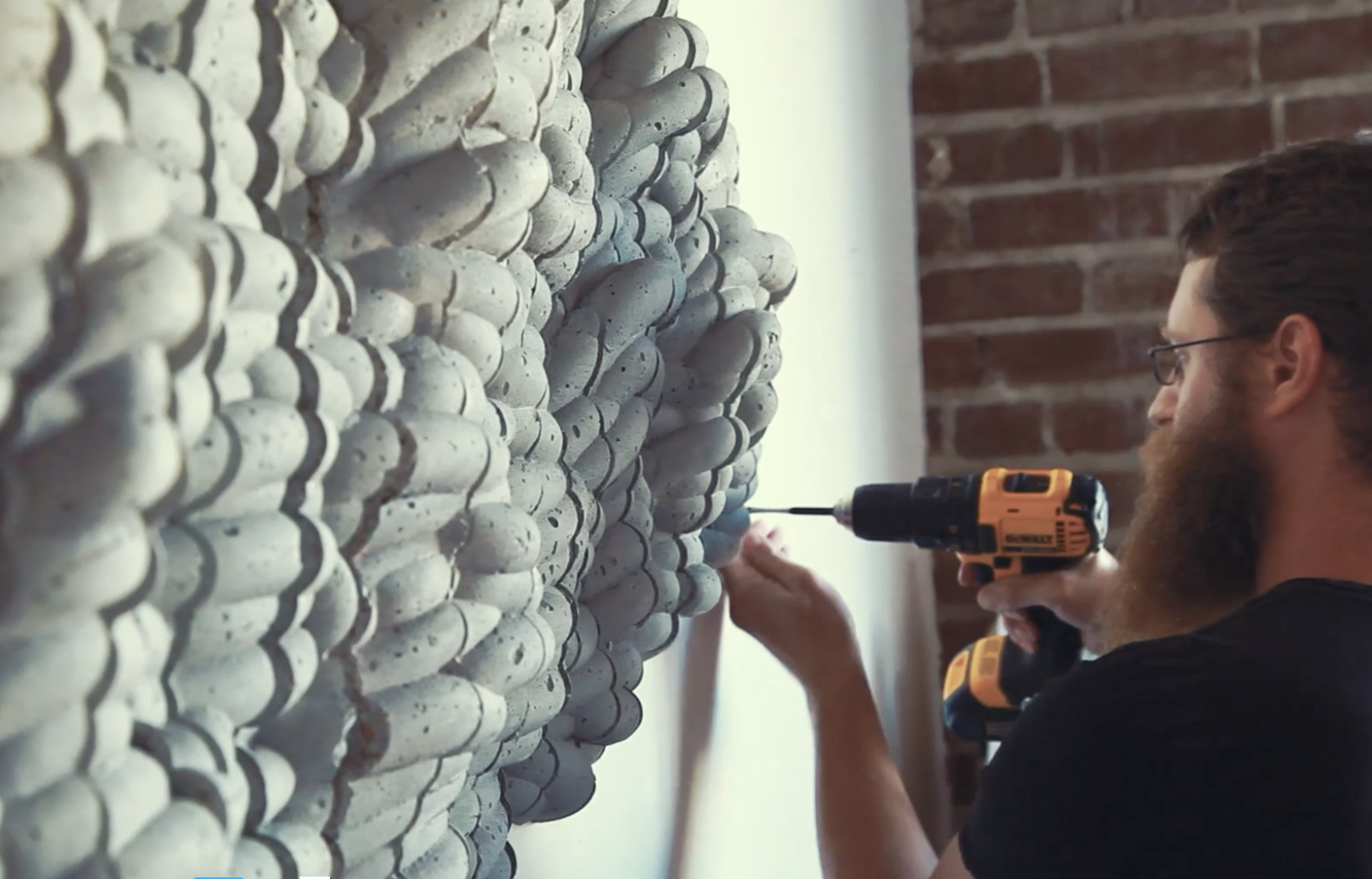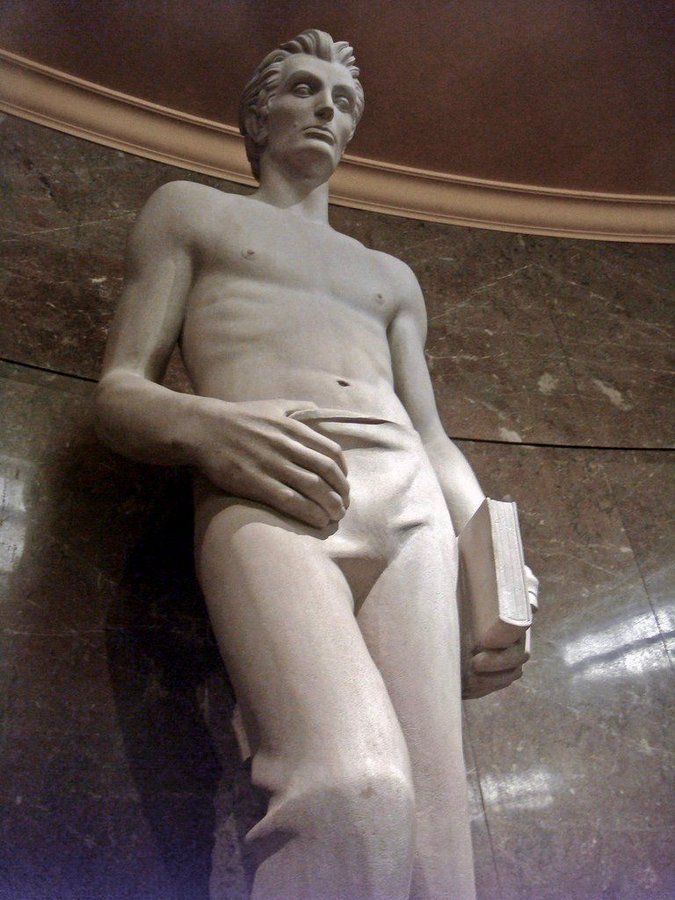“Making art for public spaces means presenting ideas to a broad and often unknown audience. Acknowledging that your worldview is in large part shaped by your surroundings seems important. I think public art requires empathy as much as it requires vision. You need to balance the integrity of the work with a responsiveness to its context.” – Ben Butler
Tell us a bit about yourself—where you’re from, why you chose to pursue art, and who are some creators that inspire your process or that interest you in your endeavors?

Unbounded
Ben Butler
4 June – 28 August 2015
Commission, Rice University Art Gallery
My mom has a story she likes to tell about my very first day of school. When I came home she asked what my favorite part of the day was. I said “playing in the sandbox”. She asked if I had a least favorite part of the day. I said “not playing in the sandbox”. I think about this whenever someone asks me about my reasons for making art. It has always been about the freedom to set parameters, like the finite boundaries of a sandbox, playing within them to see what is possible, and not wanting to leave.
I grew up north of Chicago and then attended Bowdoin College in Maine. While I had many interests entering college, and even pursued neuroscience for a while, within a couple of years I had settled on art and then sculpture specifically. This had a lot to do with the sculptor John Bisbee, who became a mentor and whose work became the foundation for how I think about making—responding directly to a material and building cumulatively. In my last semester of college, I completed a sculpture thesis project that involved 128 borrowed railroad ties, which are eight-foot-long timbers, as the material. I created a series of formal outdoor installations over the course of the semester, stacking and arranging them, and then every couple of weeks, rearranging and restacking. I realized only in retrospect that the whole project was essentially my own version of a sandbox, and that the work was not about the individual sculptures at all, but about play and curiosity.
I was also convinced early on that art was a perfect vehicle for exploring interdisciplinary ideas, and my other interests and pursuits could be sort of absorbed into art-making. While I was inspired by the history of sculpture, in particular the post-minimalists, I found myself spending more time studying things like the natural sciences, Japanese architecture, and gardening, and integrating these diverse ideas into my sculpture practice. After finishing my MFA at the School of the Art Institute of Chicago, I set up a studio on Long Island with my now wife, painter Laurel Sucsy. We moved to Memphis, Tennessee 11 years ago but kept our Long Island studio.

Laurel Sucsy in studio
Tell us about your preferred use of wood. We are especially interested in this medium in relation to your moving into the public art realm…While we understand that some of your commissions have been located in interior spaces, what are your thoughts on how long public art should last in outdoor public space? How might this affect your use of the media in the future? How much does material inform your process?
The material always informs the process and almost always comes first. I began using wood when I was first experimenting with sculpture, as it just made sense as the best way to realize my ideas at the time. It’s easily worked, readily available and affordable, and it lends itself to being sliced and chopped into uniform sticks, blocks, and other units. I then quickly realized that I could use the imperfections of this organic material to counterbalance some of the more geometric and systematic structures I was creating. I began using the warmth of the wood to keep the work earthbound and intimate. The Crosstown Arts Theater project in Memphis is a prime example of this juxtaposition. What is otherwise essentially a black cube of space is filled, nearly wall-to-wall, with raw wood acoustic panels. The wooden forms undulate and shift and serve as a kind of visual analogy to the sound moving through the space. They establish the whole tone of the space and literally shape its sound as well.

Crosstown Theater installation by Ben Butler
As I moved into public art, I found that every venue presented a slightly different set of parameters and challenges. When it comes to outdoor public work, sometimes the only solution is a truly “permanent” medium, and I have worked with materials like steel and concrete when appropriate. But I have also found a good number of opportunities to create outdoor wood sculptures and installations.
The natural weathering of the wood is often a very desirable part of these projects, as it exaggerates its evocative qualities. Wood’s longevity is consistently underestimated. There are buildings in Japan with wood exteriors that are well over 1,000 years old. Every material requires some type of maintenance, and there are several ways to greatly extend the lifespan of wood outdoors, from the selection of species to simple natural finishes. Communicating a reverence for impermanence or “wabi-sabi” in the way the wood ages, the silvering of the surface or the growth of lichen, for example, has great potential.
How do you conceptualize and then build your installations? We watched some of your videos on your website, and the design process seems very time intensive. Can you expand on that? Do all projects begin with a drawing? Do you ever start with a material or image to begin your process?
I am a very tactile thinker, and I need to touch every part of the process whenever possible. There is no real delineation between the design phase and fabrication phase. In fact, I have never considered any part of my practice to constitute a design phase. In a certain sense, I am
anti-design. I generally work directly with materials —often large amounts of uniform units specifically dimensioned—and explore their potential, eventually discovering an interesting method for manipulating and building with the parts. Often this discovery has to do with the notion of emergence—through accumulation, the whole develops characteristics that have nothing to do with the part. New phenomena emerge, and they often have the quality of being highly organic or unpredictable, with rich visual and spatial effects.

Image of Old Growth by Ben Butler
Design, in my mind, has to do with stepping back and pre-conceptualizing a form or image. I am more comfortable existing inside the work, building within a strict system and following it almost blindly, so that I am discovering the work as it happens. Some of this instinct has been developed while working in close proximity to my wife, who is an abstract painter. Her process relies on her entering the studio without a trace of preconception and being completely open and responsive to what happens on the canvas. This was counterintuitive to me as I was working with materials and tools that demanded logistics planning and were very expensive and time consuming to play around with. The spontaneity gets stamped out if you don’t fight to keep inserting it into the process.
In the case of public art, all of these issues are greatly magnified and logistics can become the enemy of really creative and interesting work. When proposing public art, I give myself plenty of time to play, to be spontaneous, and to develop a piece thoroughly before proposing it. It rarely begins with drawings, models, or some visualization of the piece, but rather with some kind of physically manifested work. I need to know how the piece will operate physically and spatially, not just as a simple image. I then back-track and create renderings of the work on site. So my proposals never involve computer renderings but are instead full of material samples and illustrations of how the installation will relate to human scale and how it will feel on site.
We understand that you split your time between studios in Memphis and NY. How do you think that affects your process—two climates, two cultures, two communities, etc.
The two settings are incredibly different from each other, and I think this keeps me from seeing the world through a single lens. My primary studio is in Memphis, and that is where I work with assistants and fabricate almost everything. It is busy, large, loud, and full of energy, and my studio time is often filled with endless logistical details. My Long Island studio, where I tend to spend two months a year, is tiny, quiet, and secluded. It’s near the ocean and very beautiful. That is my time to slow down and reconnect with a more direct process—limited materials, limited tools, and lots of mental space.
Whenever I move back and forth, or travel anywhere for that matter, I feel recalibrated and my priorities seem to realign in a positive way.
Making art for public spaces means presenting ideas to a broad and often unknown audience. Acknowledging that your worldview is in large part shaped by your surroundings seems important. I think public art requires empathy as much as it requires vision. You need to balance the integrity of the work with a responsiveness to its context.
How do you achieve works that visualize the “tension between spontaneity and methodology?” Do you believe viewers need to know your process to understand this? Or is your goal to achieve this through the visualization of the final piece?
As my work has gotten larger and more complicated, I have noticed that my intuitive response has been to be more aggressive about countering that systemization with some element that is spontaneous. When a piece involves the cutting and assembly of thousands of wooden blocks, done mostly by a crew of assistants, for example, I recognize that the templates from which we cut those blocks, need to be hand-drawn—imperfect, unpredictable, and in some way antithetical to the mechanized fabrication process.
This tension, or resonance, is very much a product of process and how the viewer perceives the process. In my installation “Unbounded,” a vast and sprawling structure of poplar sticks follows a more or less perfect grid. It is predictable and unchanging and quintessentially human. Its boundary, however, is amorphous and unpredictable, a dynamic element which is the product of an intuitive and spontaneous installation. This is underlined by the fact that the entire piece is pegged together with matchsticks, a very simple, unsophisticated and tactile detail. My process is in many ways transparent for the viewer. The construction materials and method are instantly understood, so then the focus moves instead to the visual and spatial phenomena that occur as you navigate the space with your mind and your body.
We like your discussion about creating objects of contemplation—slow discovery through perception. We can see this being achieved in your work. However, in a world where everything moves at lightning speed, and it is increasingly difficult for people to slow down as they look for immediate feedback, answers, and results, how does your work counteract this impulse?
In a world full of quick answers, as you describe it, I think art has the potential to ask slow questions. Some of my work that I enjoy the most involves complex, immersive environments. They invite the viewer in, they require navigation, and they can’t be perceived from a single vantage point. If a piece is complex and reveals its mysteries slowly, I imagine the experience of it involves some adjustment in perception and hopefully encourages curiosity. I know that for me, the most significant art experiences leave me with a sense of a shifted reality, such that I am inspired to look at the world more closely. I am always inspired by watching children, especially my own, explore an installation. They have a beautifully succinct list of criteria for evaluating the work. They want to be engaged, they want to be free to wonder, and more than anything, they want their curiosity to be rewarded.
We’d like to learn more about your interest in manmade vs. nature made —thinking about the why—the story of how something comes into being. Your intention is to bring the feeling of nature into domesticated spaces; do you play with light to evoke this feeling as well?
I am primarily interested in process and how an object or space offers evidence of how it came into being, the forces that shaped it over time and are still shaping it. And I enjoy contemplating how humans make things in ways that are often quite different from how we see things being made in the natural world. The way these ideas enter my work is sometimes fairly straightforward. I discover a method for building that depends less on my subjective decision-making process and more on predetermined parameters, so that the work is more or less self-generating—like it was grown instead of designed. It often appears part human and part non-human, and there is a formal tension that, when successful, allows the piece to resonate. Hopefully it’s sort of a seductive puzzle and keeps the viewer engaged and in a state of contemplation.

Ben Butler in process
Scale also plays an important role in addressing our relationship to the natural world. My work subtly evokes geological time, exponential growth, vast processes of accretion and
erosion—things that occur beyond a human scale. Holding these expansive ideas together feels necessary, a meditation and an acknowledgement of forces larger than us.
Visit Ben Butler’s website to learn more about him and visit his public art works on the Public Art Archive.
Special thanks to Ben Butler and Emily Harris Halpern for organizing this interview.

